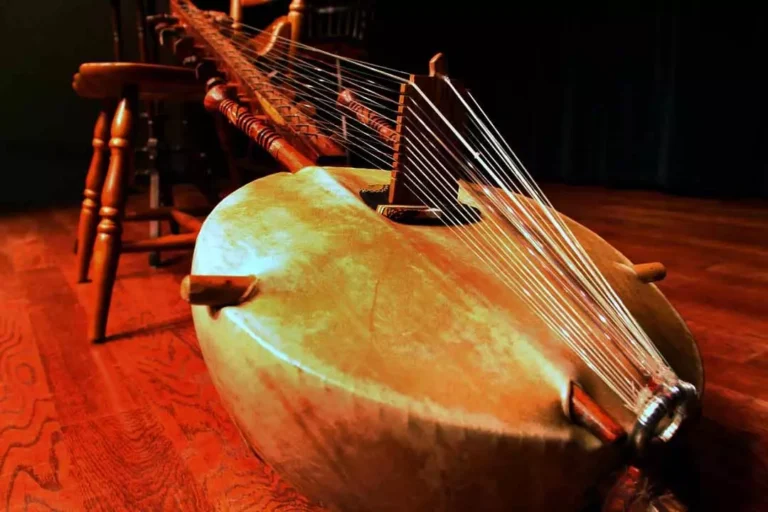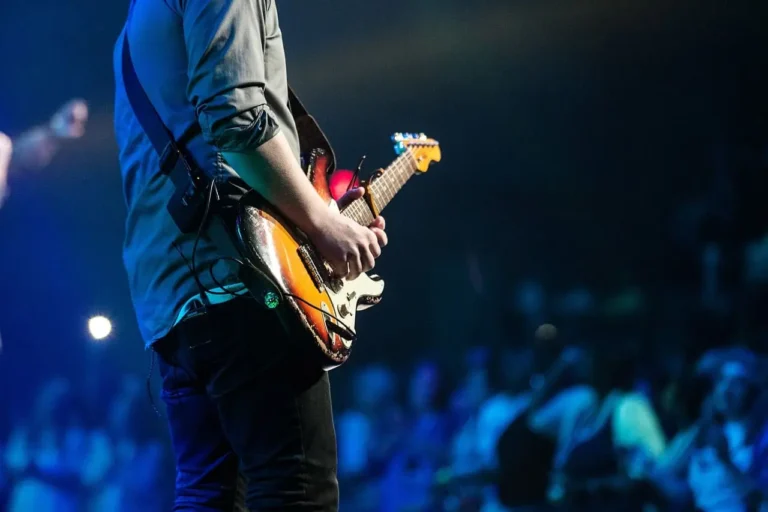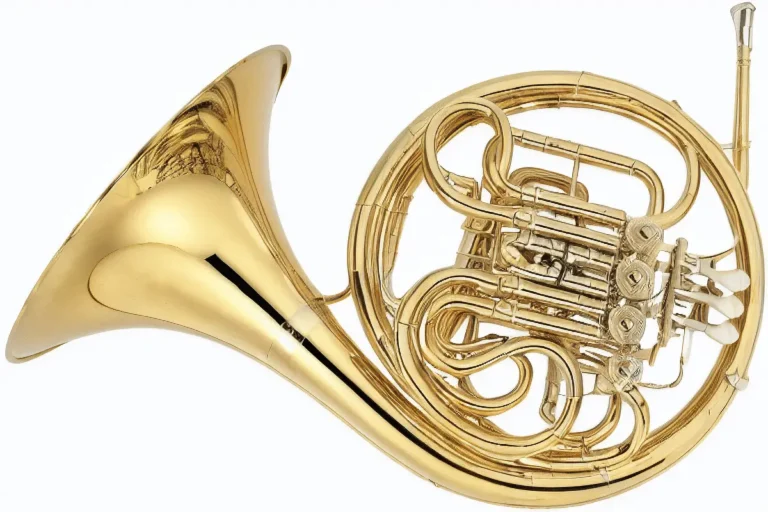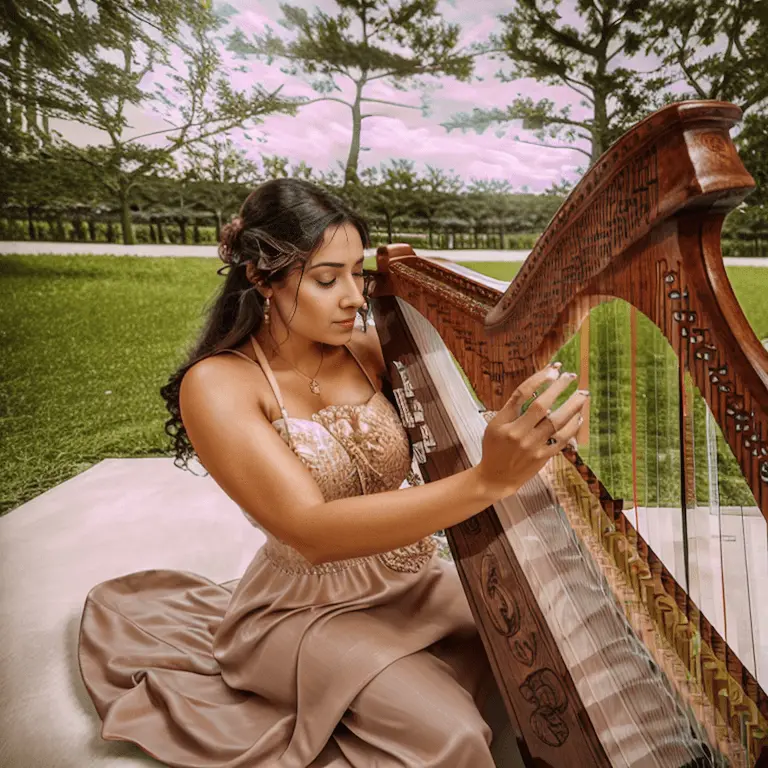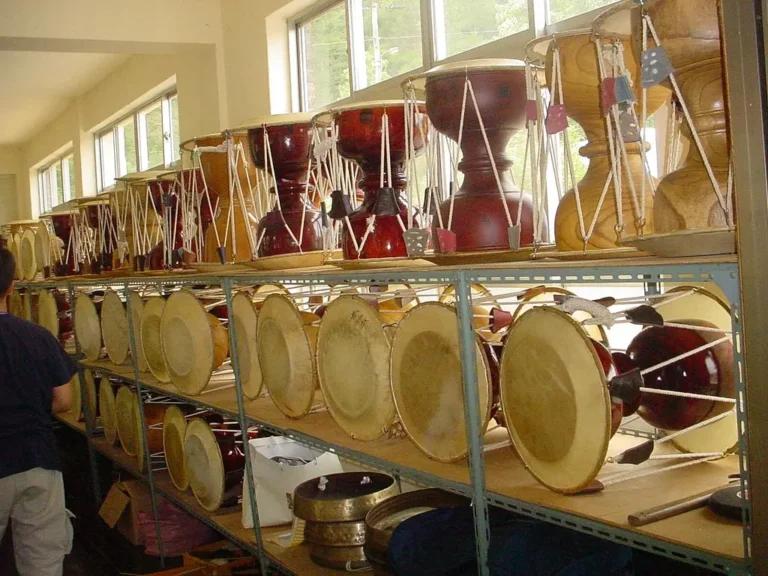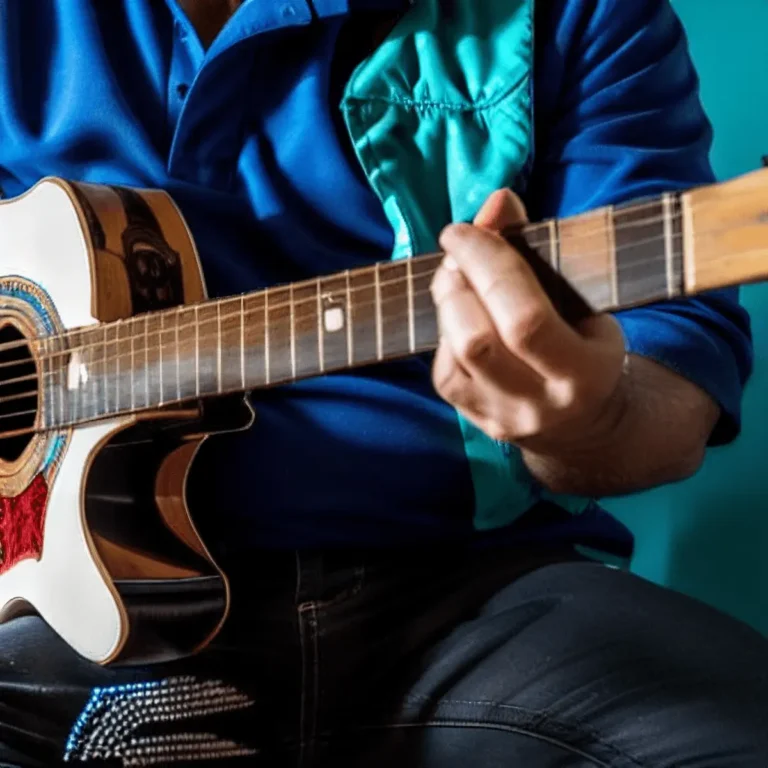Musical Instruments That Start With D
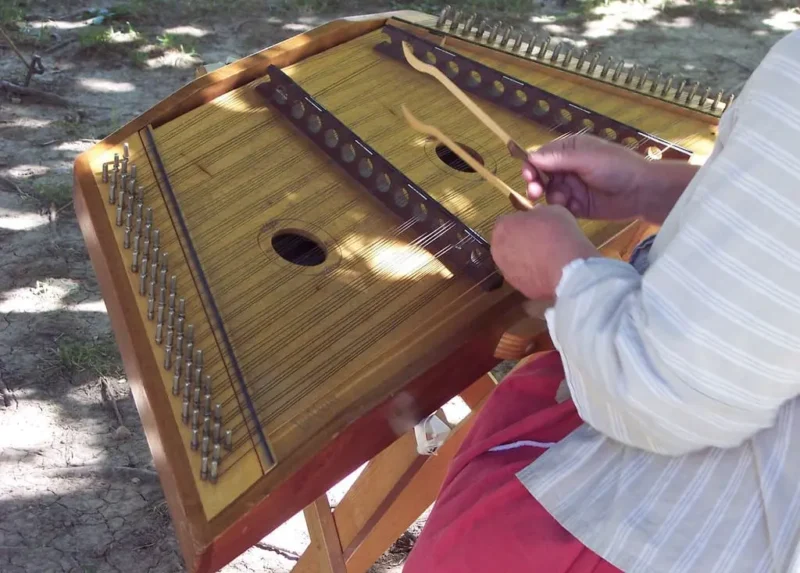
From the rhythmic sounds of drums to the melodic melodies of woodwinds, instruments that start with the letter D offer a diverse range of musical expressions. From the dulcimer’s strumming strings to the duduk’s mournful oboe-like sound, these instruments bring a rich variety of cultural influences and traditions to the world of music.
Dabakan
The dabakan is a musical instrument from the Philippines that belongs to the category of membranophones, meaning it produces sound through the vibration of a membrane. It is a percussion instrument, which means it is played by being struck or beaten. The dabakan is a goblet drum, characterized by its bowl-like body and drumhead stretched over the open top of the bowl. It is often played with sticks or by hand and can be found in a variety of musical genres in the Philippines, including traditional folk music and modern pop and rock music.
Daf (Dap, Def)
The daf, also known as the dap or def, is a type of membranophone hailing from Iran. Like the dabakan, it is a percussion instrument played by being struck or beaten. The daf is a frame drum, featuring a drumhead encased in a frame and played with the hands or sticks. It is an integral part of many traditional music styles in Iran, including Sufi music and folk music, and is also used in other parts of the Middle East and Central Asia.
Damaru
The damaru is a small, hand-held drum native to India, Nepal, and Tibet. It is a membranophone and a percussion instrument, played by being struck with sticks or by hand. The damaru has an hourglass shape and is traditionally used in Hindu rituals and religious ceremonies, but it is also found in traditional and modern music in the region.
Đàn bầu
The đàn bầu is a chordophone from Vietnam, which produces sound through the vibration of strings. It is a stringed instrument played by plucking or strumming the strings with the fingers or a plectrum. The đàn bầu is a monochord, consisting of a single string stretched over a resonating chamber and played with a bow. It is commonly used in traditional Vietnamese music, particularly in the northern region of Vietnam.
Đàn đáy
The đàn đáy is another chordophone from Vietnam and a stringed instrument played by plucking or strumming the strings with the fingers or a plectrum. It is a type of lute with a pear-shaped body, a long neck with frets, and a resonating chamber with a flat top and a deep waist. The đàn đáy is traditionally used in Vietnamese folk and classical music.
Đàn gáo
The đàn gáo is a chordophone from Vietnam that shares many characteristics with the đàn đáy. It is also a lute with a pear-shaped body, a long neck with frets, and a resonating chamber with a flat top and a deep waist. It is played by plucking or strumming the strings with the fingers or a plectrum and is used in traditional Vietnamese music, particularly in the northern region of the country.
Đàn nguyệt
The đàn nguyệt is a chordophone from Vietnam that is similar to the đàn đáy and đàn gáo. It is a lute with a pear-shaped body, a long neck with frets, and a resonating chamber with a flat top and a deep waist. It is played by plucking or strumming the strings with the fingers or a plectrum and is used in traditional Vietnamese music.
Đàn tam thập lục
The đàn tam thập lục is a chordophone from Vietnam that belongs to the category of stringed instruments, which produce sound through the vibration of strings. The đàn tam thập lục is played by plucking or strumming the strings with the fingers or a plectrum. It is a type of zither, which is a stringed instrument with a flat soundboard and a large number of strings stretched over it. The đàn tam thập lục is traditionally used in Vietnamese classical music.
Đàn tranh
The đàn tranh is another chordophone from Vietnam that is classified as a stringed instrument. It is played by plucking or strumming the strings with the fingers or a plectrum. The đàn tranh is a type of zither with a rectangular soundboard and a long neck with frets. It is traditionally used in Vietnamese classical music and has a distinctive, melodic sound.
Đàn tỳ bà
The đàn tỳ bà is a chordophone from Vietnam that is also classified as a stringed instrument. It is played by plucking or strumming the strings with the fingers or a plectrum. The đàn tỳ bà is a type of lute with a pear-shaped body, a long neck with frets, and a resonating chamber with a flat top and a deep waist. It is traditionally used in Vietnamese folk and classical music and has a distinctive, rich sound.
Danso
The danso is an aerophone from Korea that belongs to the category of woodwind instruments, which produce sound through the vibration of a reed or reeds. The danso is an end-blown flute, meaning it is played by blowing air across a hole near one end of the flute. It has a narrow, cylindrical bore and a high-pitched, clear sound and is traditionally used in Korean folk music.
Davul (Dahol, Daul, Daouli, DhaulliDohol Tapan, Topan, Tupan Tabl Toba, Towla Tof
The davul (also known as the dahol, daul, daouli, dhaulli, dohol, tapan, topan, tupan, tabl, toba, towel, or tof) is a membranophone from Turkey that is classified as a percussion instrument. It is played by being struck or beaten and is a type of bass drum, which is a large drum with a deep, booming sound. The davul is an important instrument in many traditional music genres in Turkey, including folk music and Sufi music, and is also used in other parts of the Middle East and Central Asia.
Dayereh
The dayereh is a membranophone from Azerbaijan, Bulgaria, Iran, Kazakhstan, Kyrgyzstan, North Macedonia, Tajikistan, Turkmenistan, and Uzbekistan. It is a percussion instrument played by being struck or beaten and is a type of drum with a single skin stretched over a frame. The dayereh is used in a variety of traditional music styles in the region, including folk music and Sufi music.
Death growl
The death growl is a vocal technique used in certain styles of heavy metal music, particularly death metal and black metal. It is a form of extreme metal singing that involves using the human voice to produce a guttural, growling sound. The death growl is often used to create a sense of aggression and intensity in the music.
Den-den daiko
The den-den daiko is a type of membranophone from Japan that is classified as a percussion instrument. It is played by being struck or beaten and is a bell with a high, ringing sound. The den-den daiko is traditionally used in Japanese festivals and rituals and is also used in modern music in Japan.
Dhak
The dhak is a membranophone from Bangladesh and India that is classified as a percussion instrument. It is played by being struck or beaten and is a type of drum with a single skin stretched over a frame. The dhak is an important instrument in many traditional music styles in the region, including Hindu religious music and folk music.
Dhimay (Dhimaya)
The dhimay (also known as the dhimaya) is a membranophone from Nepal that is classified as a percussion instrument. It is played by being struck or beaten and is a type of drum with a single skin stretched over a frame. The dhimay is traditionally used in Nepal for Hindu rituals and religious ceremonies, but it is also used in modern music in the region.
Dhol
The dhol is a membranophone from Asia, India, and Pakistan that is classified as a percussion instrument. It is played by being struck or beaten and is a type of bass drum, which is a large drum with a deep, booming sound. The dhol is an important instrument in many traditional music styles in the region, including folk music and Sufi music, and is also used in modern music in the region.
Dholak (Dholaki)
The dholak (also known as the dholaki) is a membranophone from Asia, Bangladesh, India, Nepal, Pakistan, and Sri Lanka that is classified as a percussion instrument. It is played by being struck or beaten and is a type of barrel drum, which is a drum with a cylindrical body and a drumhead stretched over both ends. The dholak is an important instrument in many traditional music styles in the region, including folk music and Sufi music, and is also used in modern music in the region.
Diddley bow
The diddley bow is a chordophone from the United States that is classified as a stringed instrument. It is played by plucking or strumming the strings with the fingers or a plectrum. The diddley bow is a type of one-stringed instrument that is traditionally made from a single piece of wire or string stretched over a resonating chamber. It is an important instrument in African American folk music and has a distinctive, twangy sound.
Didgeridoo
The didgeridoo is an aerophone from Australia that belongs to the category of natural trumpets, which produce sound through the vibration of the player’s lips. It is a trumpet-like instrument with a long, narrow bore and a deep, buzzing sound and is traditionally made from a eucalyptus branch hollowed out by termites. The didgeridoo is an important instrument in Australian Aboriginal music and is also used in modern music in the region.
Dihu
The dihu is a chordophone from China that is classified as a stringed instrument. It is played by plucking or strumming the strings with the fingers or a plectrum. The dihu is a type of bowed stringed instrument with a long neck and a resonating chamber with a flat top and a deep waist. It is traditionally used in Chinese classical music and has a distinctive, delicate sound.
Dimdi
The dimdi is a membranophone from India that is classified as a percussion instrument. It is played by being struck or beaten and is a frame drum, characterized by its drumhead encased in a frame. The dimdi is traditionally used in Hindu rituals and religious ceremonies in India and has a high, ringing sound.
Diple (or dvojnice)
The diple (also known as the dvojnice) is an aerophone from Croatia that belongs to the category of reed instruments, which produce sound through the vibration of a reed or reeds. The diple is a type of bagpipe, which is a wind instrument with a reservoir of air that is blown into through a blowpipe and then channeled through a set of pipes to produce sound. The diple is an important instrument in Croatian folk music and has a distinctive, nasal sound.
Dizi
The dizi is an aerophone from China that belongs to the category of woodwind instruments, which produce sound through the vibration of a reed or reeds. The dizi is a type of flute with a narrow, cylindrical bore and a high-pitched, clear sound. It is traditionally made from bamboo and is an important instrument in Chinese classical and folk music.
Djembe
The djembe is a membranophone from West Africa, including Burkina Faso, Gambia, Guinea, Guinea-Bissau, Mali, and Senegal, that is classified as a percussion instrument. It is played by being struck or beaten and is a goblet drum, characterized by its bowl-like body and drumhead stretched over the open top of the bowl. The djembe is an important instrument in many traditional music styles in the region, including folk music and Sufi music, and is also used in modern music in the region.
Dollu
The dollu is a membranophone from India that is classified as a percussion instrument. It is played by being struck or beaten and is a frame drum, characterized by its drumhead encased in a frame. The dollu is traditionally used in Hindu rituals and religious ceremonies in India and has a deep, booming sound.
Dombra
The dombra is a chordophone from Azerbaijan, Bashkortostan, Kazakhstan, Kyrgyzstan, Russia, Tatarstan, and Uzbekistan that is classified as a stringed instrument. It is played by plucking or strumming the strings with the fingers or a plectrum. The dombra is a long-necked lute with a pear-shaped body and a resonating chamber with a flat top and a deep waist. It is traditionally used in folk music in the region and has a distinctive, twangy sound.
Domra
The domra is a chordophone from Russia that is classified as a stringed instrument. It is played by plucking or strumming the strings with the fingers or a plectrum. The domra is a type of lute with a pear-shaped body and a resonating chamber with a flat top and a deep waist. It is traditionally used in Russian classical and folk music and has a distinctive, bright sound.
Doshpuluur
The doshpuluur is a chordophone from Tuva that is classified as a stringed instrument. It is played by plucking or strumming the strings with the fingers or a plectrum. The doshpuluur is a type of lute with a pear-shaped body and a resonating chamber with a flat top and a deep waist. It is traditionally used in Tuvan folk music and has a distinctive, twangy sound.
Dotara
The dotara is a chordophone from Bangladesh that is classified as a stringed instrument. It is played by plucking or strumming the strings with the fingers or a plectrum. The dotara is a type of lute with a pear-shaped body and a resonating chamber with a flat top and a deep waist. It is traditionally used in Bengali folk and classical music and has a distinctive, bright sound.
Double bass or the Five-string double bass
The double bass (also known as the five-string double bass) is a chordophone from Western Europe that is classified as a stringed instrument. It is played by plucking or strumming the strings with the fingers or a plectrum and is the largest and lowest-pitched member of the string family. The double bass is used in a wide range of music genres, including classical, jazz, and popular music, and has a deep, rich sound.
Double bell euphonium
The double bell euphonium is an aerophone from the United States of America that belongs to the category of brass instruments, which produce sound through the vibration of the player’s lips and the vibration of the instrument’s metal body. The double-bell euphonium is a type of trumpet with two bells, one at either end of the instrument, that produces a rich, mellow sound. It is used in brass bands and military bands and is also used in modern music in the region.
Doulophone/cuprophone
The doulophone (also known as the cuprophone) is an aerophone from the United States of America that belongs to the category of brass instruments, which produce sound through the vibration of the player’s lips and the vibration of the instrument’s metal body. The doulophone is a type of trumpet with a conical bore and a deep, mellow sound. It is a relatively rare instrument that is used in modern music in the region.
Dreadnought
The dreadnought is a chordophone that is classified as a stringed instrument. It is played by plucking or strumming the strings with the fingers or a plectrum and is a type of guitar with a large, deep body and a powerful, resonant sound. The dreadnought is named after the HMS Dreadnought, a British battleship, and is an important instrument in many modern music genres, including rock, pop, and country.
Drum
A drum is a membranophone that is classified as a percussion instrument. It is played by being struck or beaten and produces sound through the vibration of a drumhead stretched over the open top of a cylindrical or conical body. Drums come in many different shapes, sizes, and materials, and are used in a wide range of music genres and cultural contexts around the world.
Drum kit
A drum kit, also known as a drum set or trap set, is a collection of idiophones and membranophones that are played as a percussion ensemble. It typically consists of a bass drum, snare drum, and a number of toms, as well as a variety of cymbals and other auxiliary percussion instruments. The drum kit is a popular instrument in many modern music genres, including rock, pop, jazz, and blues, and is played by a drummer using drumsticks or other beaters.
Duduk
The duduk is an aerophone from Armenia that belongs to the category of reed instruments, which produce sound through the vibration of a reed or reeds. The duduk is a type of oboe with a double reed and a narrow, conical bore that produces a warm, mournful sound. It is traditionally made from apricot wood and is an important instrument in Armenian folk and classical music.
Dulcian
The dulcian is an aerophone from Western Europe that belongs to the category of reed instruments, which produce sound through the vibration of a reed or reeds. The dulcian is a type of bassoon with a double reed and a long, narrow bore that produces a deep, mellow sound. It is traditionally made from wood and is an important instrument in classical music and early music ensembles.
Dulcimer
The dulcimer is a chordophone from England that is classified as a stringed instrument. It is played by plucking or strumming the strings with the fingers or a plectrum and is a type of zither with a long, narrow body and a number of strings stretched over a soundboard. The dulcimer is an important instrument in English folk music and has a distinctive, mellow sound.
Dulzaina
The dulzaina is an aerophone from Spain that belongs to the category of reed instruments, which produce sound through the vibration of a reed or reeds. The dulzaina is a type of oboe with a double reed and a narrow, conical bore that produces a bright, piercing sound. It is traditionally used in Spanish folk music and has a distinctive, nasal quality.
Dung-Dkar
The dung-dkar is an aerophone from Tibet that belongs to the category of trumpets, which produce sound through the vibration of the player’s lips and the vibration of the instrument’s metal or wooden body. The dung-dkar is a type of conch trumpet that is made from a large sea snail shell and is played by blowing into a hole at one end of the shell. It is traditionally used in Tibetan Buddhist rituals and has a deep, sonorous sound.
Dunun (Dundun)
The dunun (also known as the dundun) is a membranophone from West Africa, Burkina Faso, Ivory Coast, Gambia, Guinea, Mali, and Senegal that is classified as a percussion instrument. It is played by being struck or beaten and is a type of drum with a cylindrical body and a drumhead stretched over one or both ends. The dunun is an important instrument in West African music and has a deep, resonant sound.
Dutar
The dutar is a chordophone from Azerbaijan, Iran, Kazakhstan, Kyrgyzstan, Tajikistan, Turkmenistan, and Uzbekistan that is classified as a stringed instrument. It is played by plucking or strumming the strings with the fingers or a plectrum and is a type of lute with a pear-shaped body and a long neck. The dutar is an important instrument in the music of Central Asia and has a rich, resonant sound.
Duxianqin
The duxianqin is a chordophone from China that is classified as a stringed instrument. It is played by plucking or strumming the strings with the fingers or a plectrum and is a type of zither with a long, narrow body and a number of strings stretched over a soundboard. The duxianqin is an ancient instrument that is traditionally associated with the music of the Chinese imperial court and has a delicate, ethereal sound.
Dzhamara
The dzhamara is an aerophone from Greece that belongs to the category of woodwinds, which produce sound through the vibration of a reed or reeds. The dzhamara is a type of end-blown flute or kaval with a narrow, conical bore and a range of up to two octaves. It is traditionally made from wood or bone and is an important instrument in the music of the Balkans and Eastern Europe.
conclusion
Whether you’re a fan of the booming bass of the dhol or the intricate melodies of the dizi, instruments starting with D have something to offer every music lover. From their diverse origins to their unique sounds, these instruments are an essential part of the musical landscape and will continue to captivate and inspire listeners for generations to come.
You can explore more of this series by checking out my next post on instruments that start with the letter e.
References:
flickr.com/photos/lyle58/1393421756
From the bustling city of Mumbai, I am a professional Composer, Producer, and Educator with a wealth of expertise in the industry. With over 15 years of experience and a diverse portfolio including composing for movies, television, web series, songwriting, music production, and creating meditation music. I also love to teach music and musicality to students worldwide. When I’m not in the studio, you can find me doing music consultancy for independent projects and exploring the intersection of Space & Spirituality.

